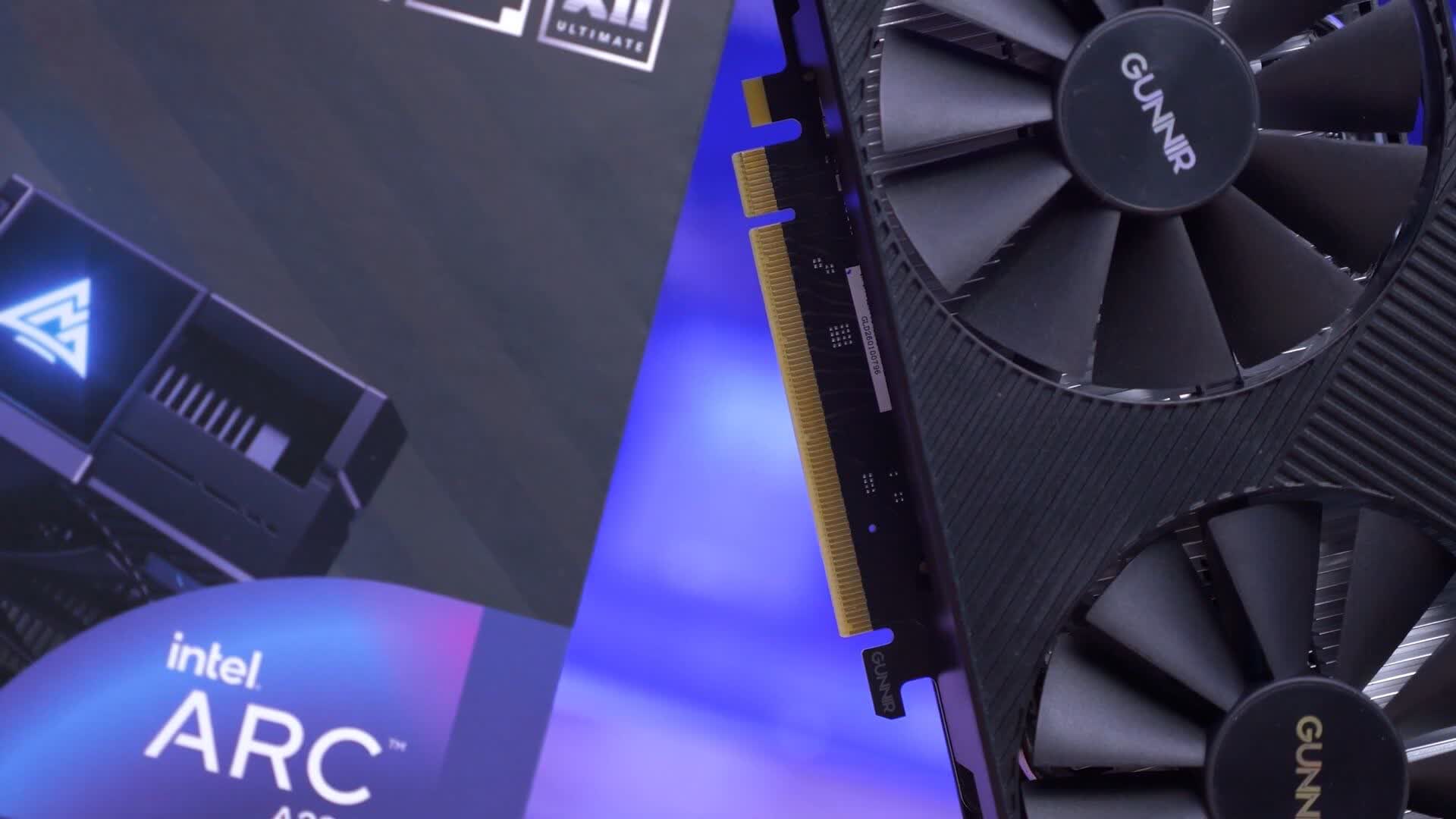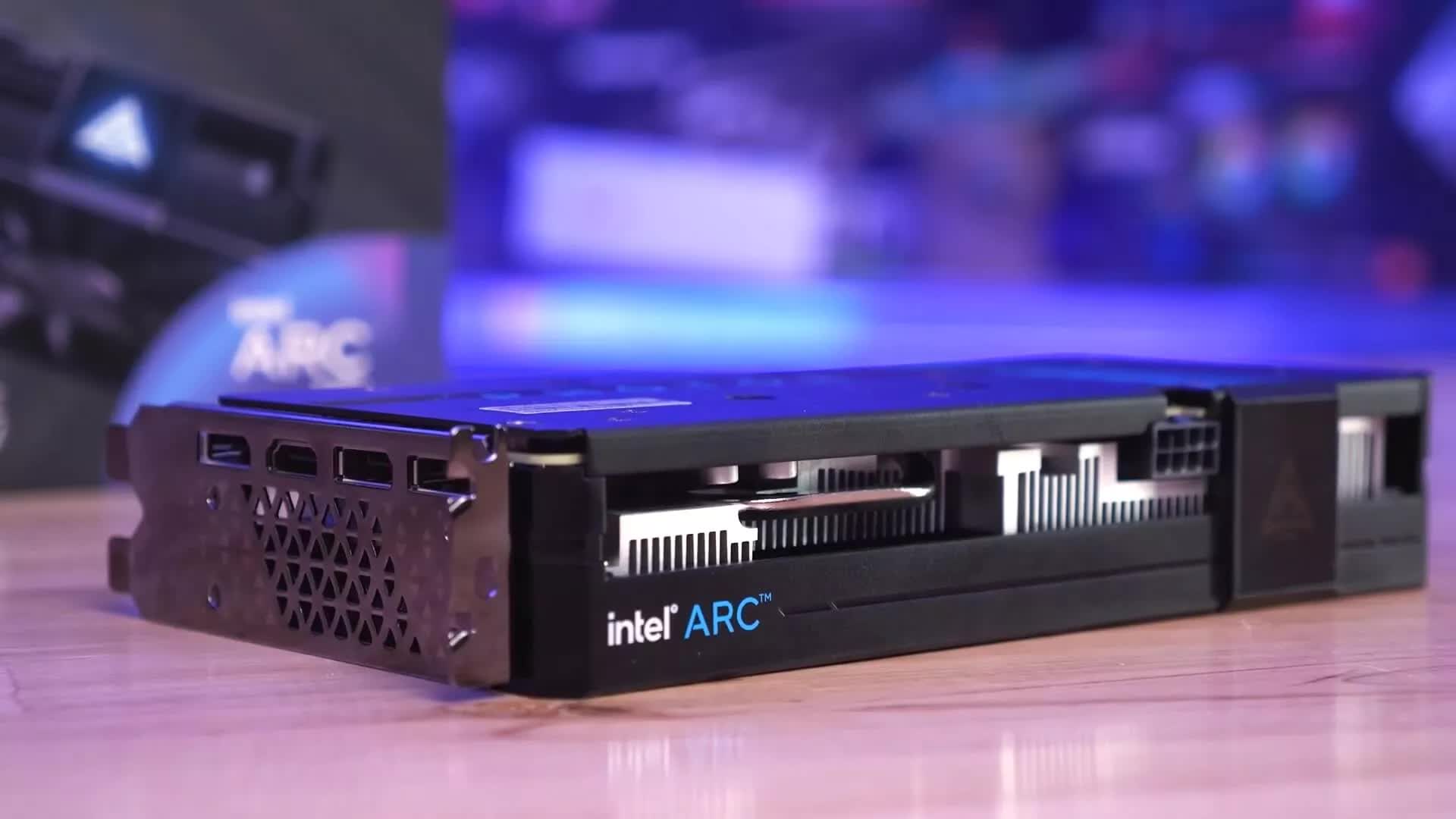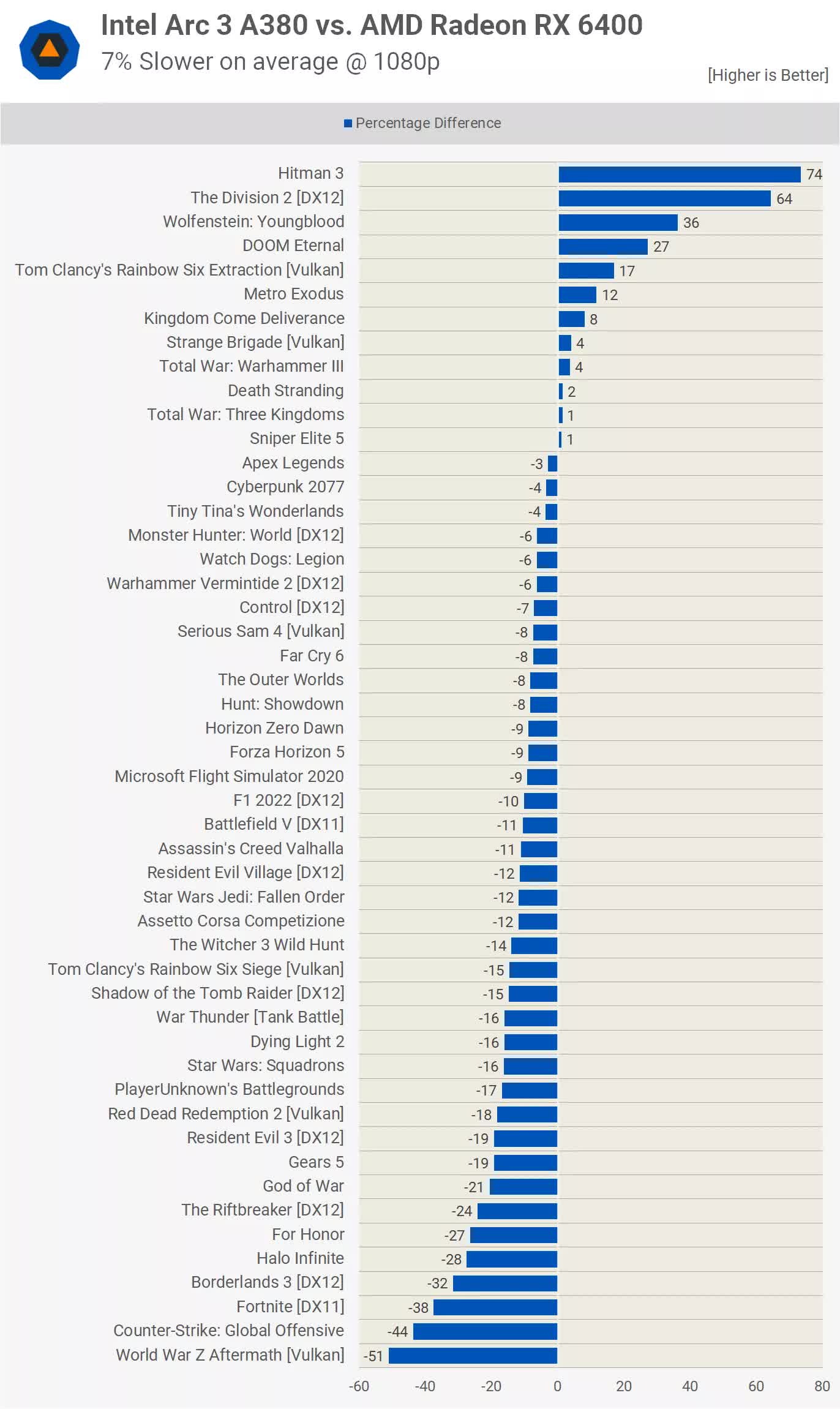In context: It shouldn't surprise anyone that Intel's Arc Alchemist GPUs don't come with drivers on the same level as Nvidia and AMD offerings. Team Blue has a lot of catching up to do, and now it's even dropping native support for older graphics APIs to hopefully speed up the process.
By now it's no secret that Intel's entry into the discrete GPU space with Intel Arc hasn't exactly gone to plan. Many had expected the tech giant to be able to compete with Nvidia and AMD on mid- and entry-level graphics hardware but after several delays and a rather subdued launch that doesn't seem to be the case, at least for now.
It also didn't help that Intel Arc's rollout started with a low-end card, the Arc 3 A380. Even though expectations couldn't be high for a first-gen, entry-level offering, our own Steven Walton found it to be a weak product that can barely compete with cards like AMD's Radeon RX 6400 or even older models like Nvidia's GeForce GTX 1650.
A major reason for the poor showing is that Intel is taking baby steps with driver optimization, while its competitors have put decades into perfecting their software stack for a plethora of games. The company took an expensive gamble with Arc, and some of its partners reportedly lost interest shortly after seeing the negative reception by gamers and reviewers.
However, Team Blue appears determined to improve the gaming performance and stability of Arc Alchemist GPUs with an aggressive prioritization of its efforts. For instance, the company recently moved 10th generation and older CPUs to legacy driver support and even dropped support for DirectX 9 for 12th-gen CPUs and Arc GPUs.
The latter move is more interesting, as it appears Intel will handle DirectX 9 support using DirectX 12's emulation capabilities. Specifically, the company will use an open-source mapping layer called D3D9On12 that can convert graphics commands from D3D9 to D3D12. In other words, games or applications will be able to use an emulated Direct3D 9 device instead of a native one, with similar or only slightly lower performance.

The same behavior will apply to systems equipped with both an Intel Xe integrated GPU and an Arc GPU. The latter will take over the rendering of DirectX 9 games through the D3D9On12 unless it is disabled.
In a sense, Intel is outsourcing the work of optimizing its game drivers for DirectX 9 to Microsoft so it can focus on improving DirectX 11 performance on Intel Arc. The company still has its work cut out for it, but at least the media capabilities of Intel Arc silicon such as AV1 encoding are not only decent, but they also manage to beat those of current-gen Nvidia and AMD cards.
In the meantime, Intel is readying Arc 7 cards for release and even trying to hype their performance. These will be mainstream-level offerings on the same level as cards like the Nvidia GeForce RTX 3060 (at least in modern DirectX 12 titles), but there's no word on pricing or release date.

